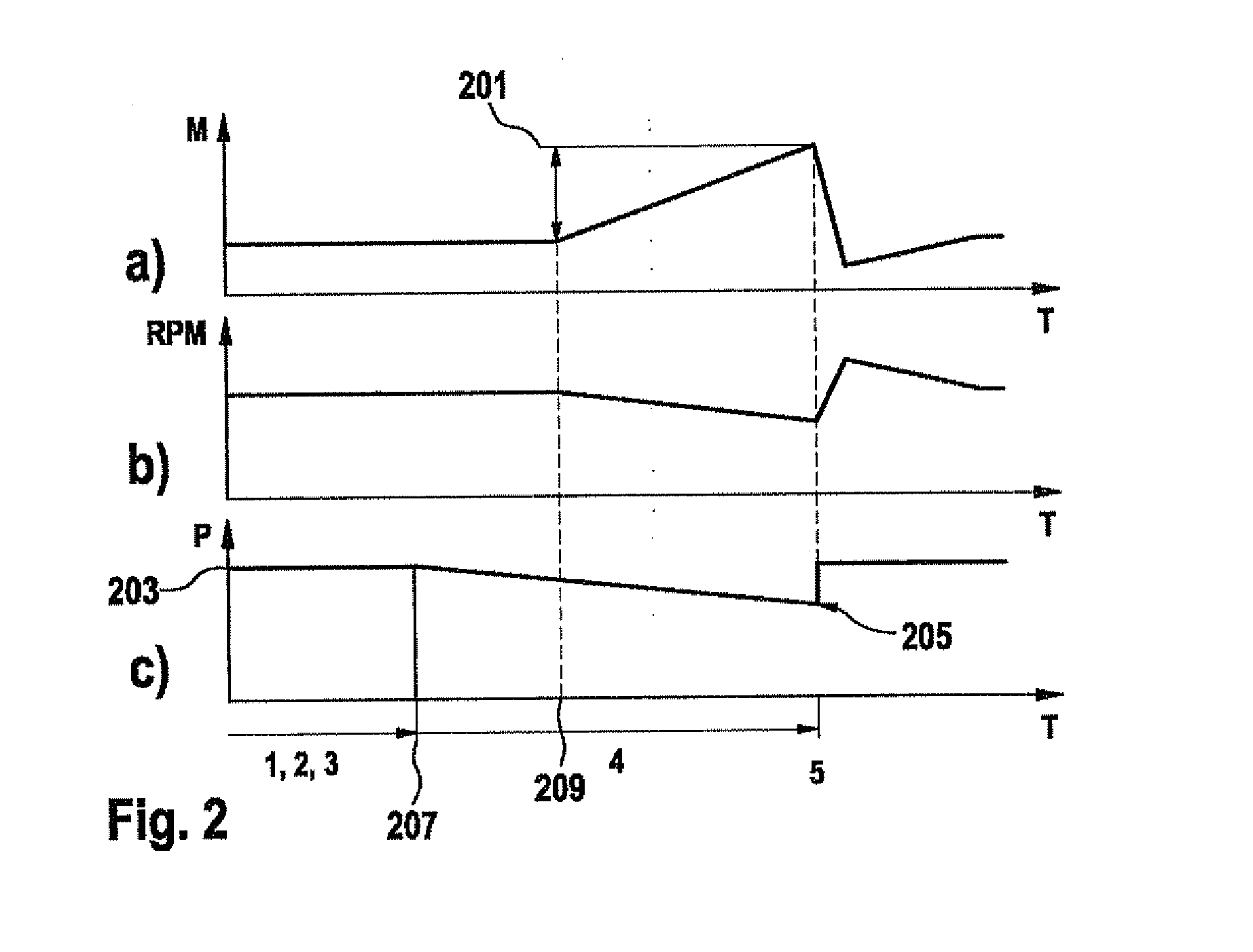Method for detecting a developing torque for a hybrid drive
a technology of hybrid drive and developing torque, which is applied in the direction of mechanical equipment, transportation and packaging, instruments, etc., can solve the problems of inability to accurately detect the developing torque of the separating clutch kb>0/b>, and take approximately 3 s to 10 s until the developing torque, etc., to achieve shorten the time, the effect of being exposed to even greater loads and shortening the tim
- Summary
- Abstract
- Description
- Claims
- Application Information
AI Technical Summary
Benefits of technology
Problems solved by technology
Method used
Image
Examples
Embodiment Construction
[0027]FIG. 3 shows a time diagram of an example method for detecting a developing torque in an engaged position of a separating clutch K0 illustrated in FIG. 1, for example. FIG. 3a shows a curve of a torque generated by an electric motor as a function of time; FIG. 3b shows a curve of a rotational speed of the electric motor as a function of time, and FIG. 3c shows a curve of a state P of separating clutch K0, which may have a disengaged state, an engaged state and a slip state, as a function of time.
[0028]For executing the example method, internal combustion engine ICE is shut off and separating clutch K0 is disengaged. Separating clutch K0 remains disengaged up to a point in time 301, while the electric motor torque is kept constant. The transmission of the hybrid vehicle may be locked in the park position, for example. Furthermore, the rotational speed of the electric motor is kept constant at 500 rpm by a speed regulator, for example. At point in time 301, separating clutch K0 ...
PUM
| Property | Measurement | Unit |
|---|---|---|
| torque | aaaaa | aaaaa |
| rotational speed | aaaaa | aaaaa |
| transfer torque | aaaaa | aaaaa |
Abstract
Description
Claims
Application Information
 Login to View More
Login to View More - R&D
- Intellectual Property
- Life Sciences
- Materials
- Tech Scout
- Unparalleled Data Quality
- Higher Quality Content
- 60% Fewer Hallucinations
Browse by: Latest US Patents, China's latest patents, Technical Efficacy Thesaurus, Application Domain, Technology Topic, Popular Technical Reports.
© 2025 PatSnap. All rights reserved.Legal|Privacy policy|Modern Slavery Act Transparency Statement|Sitemap|About US| Contact US: help@patsnap.com



